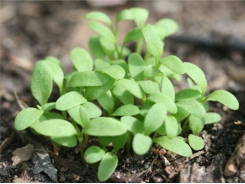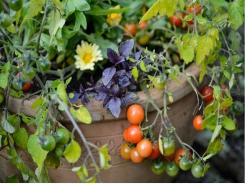A beginners guide to aquaponics

With a rapidly increasing global population, there is growing need for food. But, as there is a tremendous decline in the area of fertile land, one possible solution is aquaponics – growing fish and vegetables in an integrated, soil-free system.
Vegetables can benefit from the fish-derived nutrients in the water
In such systems fishes are fed; their waste is broken down by bacteria and is used to feed the plants. These plants clean the water that is recirculated in the system.
How does aquaponics work?
In normal fish tanks, waste builds up and the water becomes toxic for the fishes, so a filter or disposal of the water is required. In aquaponics, fish waste becomes the food for plants.
Fishes require a source of energy. The food must be rich in protein. Fishes consume food and produce the waste material. In this system, a Nitrosomonas bacterium converts ammonia that is present in fish faeces and urine to nitrite. Nitrobacter converts these nitrites into nitrates. The plants use this nitrogen. These beneficial bacteria are the very important part of the aquaponics system.
Selecting fish that mature quickly is advisable – with species like crappie, white bass, tilapia, yellow perch and barramundi all popular as they can withstand changes in temperature and oxygen levels and are relatively easy to maintain
Plant types
A range of plants, from fruit trees to potatoes, have been grown in aquaponics systems. You must decide which plant to grow inside the system. You can either plant seeds or plantlets.
Bacteria
Nitrifying and heterotrophic bacteria live on the pump, water delivery system, organic matter and walls. To promote the growth of these bacteria, you must first introduce the fishes.
Maintaining pH, nitrite, ammonia and nitrate levels are important. If any of these is out of order, corrective action is required. More observation is required for the first time to get the system fully recycled.
Hydroponics and aquaponics
Hydroponics and aquaponics can both result in better growth of plants. Water rich in nutrient with a high level of oxygen is used. Though both use soil-free way to cultivate the crops, there’s still differences between the two systems. Aquaponics uses hydroponic environment with the fishes whereas hydroponics does not need the presence of animals.
Benefits of aquaponics
- You can create this system in your indoor space.
- It uses 2/3 less water.
- You can get a high yield with hydroponics.
- It can reduce the need for artificial fertilisers.
- These systems can be created anywhere in your living room or basement. It is perfect for both indoor and outdoor space.
- There is no requirement of weeding as there is no soil; therefore, this process encourages the faster growth of the plants.
Types of aquaponic systems
- Deep water culture: uses a raft with foam, which floats on a fish effluent water channel, which is filled. The plants filter this water. Plants are put in the raft holes. This method is used to grow salads. It is used in large commercial locations.
- Media-based aquaponics: The plants are grown in an inert medium like shale or clay pellets. This media offers biological filtration where ammonia is converted into nitrates. It also helps in mechanical filtration where solid wastes are removed. It is used in homes. You can grow fruit bearing plants, herbs, and leafy vegetables.
- Nutrient film technique: The water rich in nutrients flow through a PVC pipe. Plants are kept in holes created in the pipe. Strawberries and herbs that require little support can be grown by this method.
Related news
Tools

Phối trộn thức ăn chăn nuôi

Pha dung dịch thủy canh

Định mức cho tôm ăn

Phối trộn phân bón NPK

Xác định tỷ lệ tôm sống

Chuyển đổi đơn vị phân bón

Xác định công suất sục khí

Chuyển đổi đơn vị tôm

Tính diện tích nhà kính

Tính thể tích ao




 Watch out for powdery mildew
Watch out for powdery mildew  Tomato, basil and calendula pot
Tomato, basil and calendula pot